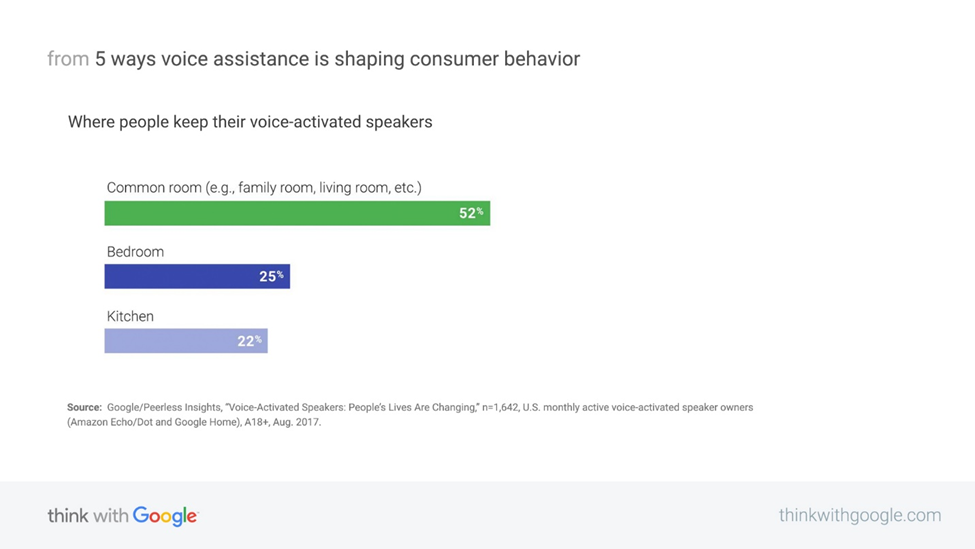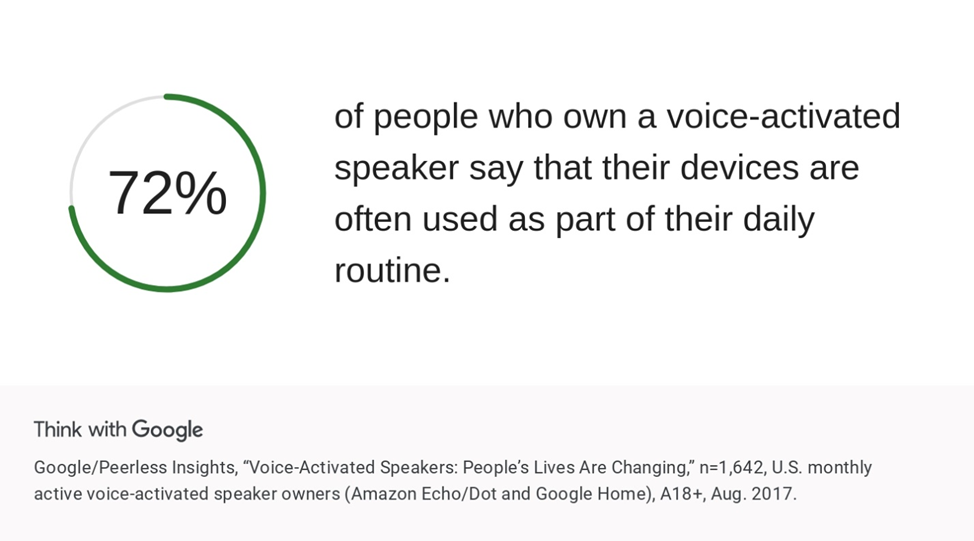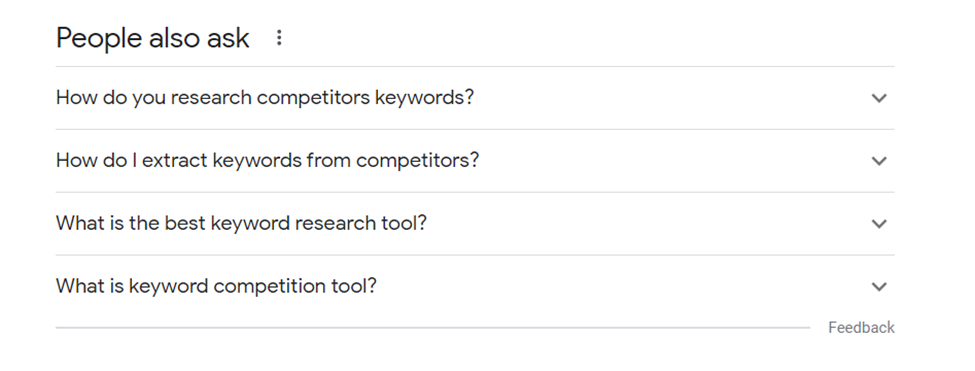While search trends and user behaviors are changing rapidly, it's crucial for businesses to keep up with the latest trends to stay competitive. Voice search has quickly become a big deal as voice-activated devices become more common.
Voice search in 2021 made $4.6 billion in global e-commerce sales. It is expected to reach $99 billion by 2026. Understanding and optimizing voice search is now essential for businesses looking to boost their online visibility.
In this guide, we'll explore;
- What is voice search and how it works?
- What is voice search optimization and why it is important?
- What is the difference between voice search and Google?
- The impact of voice search devices on SEO
- Why voice search queries are a rising trend?
- How to optimize your site for voice search?
What is voice search and how it works?
Voice search refers to the practice of using voice commands to perform online searches or interact with digital devices. Instead of typing queries into a search engine, users speak their requests aloud to devices equipped with voice recognition technology. This technology has evolved from being a novelty to a mainstream method of accessing information.
Voice search relies on advanced technologies such as Natural Language Processing (NLP) and Automatic Speech Recognition (ASR). NLP allows devices to understand and interpret human language, while ASR transcribes spoken words into text. These technologies work in tandem to process voice commands, enabling users to receive spoken responses or displayed results.
What is voice search optimization and why it is important?
Voice Search Optimization is an SEO strategy that refers to the process of enhancing and optimizing a website or online content to make it more accessible and relevant for voice-activated virtual assistants and voice search queries.
As more people use voice-activated devices like smartphones, smart speakers, and other voice-enabled gadgets, the way they search for information online is evolving.
According to Statista’s research, the number of digital voice assistants is expected to reach 8.4 billion units in 2024.
Every day more and more people are keen to make their search behaviors easier with the help of voice search assistants. According to PWC’s search, 72% of attendees would rather use voice assistant to search for something instead of conventional writing to a search engine.

With the increase in the accuracy of the voice search results, these numbers will go up and the search behavior of users will change permanently.
What is the difference between voice search and Google?
Traditional search engine optimization (SEO) primarily focuses on text-based queries entered via keyboards, whereas voice search optimization takes into account the natural language patterns used in voice searches.
Voice search typically involves spoken phrases or questions, and optimizing for this involves adapting content to match the conversational language and anticipating the specific queries users might voice.
- For example, when you look for a coffee shop, you would probably type “coffee shops near me.”
- When you use voice search you can say: “Hey Siri!/Alexa! What is the best coffee shop that serves delicious desserts?”
As you can see, you must consider longer and more complex search terms when it comes to the voice search.
The impact of voice search devices on SEO
Voice search devices have changed SEO strategies and how users interact with online content. Virtual assistants like Siri, Alexa, and Google Assistant are changing how we search for things in our daily lives.
According to Google, 52% of users prefer to put their voice search devices in their living rooms.

Unlike traditional text-based searches, voice queries are conversational and often longer, reflecting a more natural communication style. This change requires a reassessment of SEO methods. It emphasizes Voice Search Optimization (VSO). VSO is simpler to use when searching for information because it involves speaking instead of always writing.
The impact is particularly significant for businesses, as optimizing for voice searches requires an understanding of user intent, incorporation of colloquial language, and a spotlight on local relevance.
Why voice search queries are a rising trend?
Voice search assistants have started to become an integral part of people’s daily routines. According to Google, 72% of people who own a voice-activated speaker prefer to use it as their daily routine.

According to PWC’s study, 50% of attendees used voice assistant to buy something online and 25% could use voice assistant for online shopping in the future.

According to PWC’s study, the voice assistant is mostly used for takeout meals, groceries, books, and homecare items. However, it does not mean that in the future people start to buy clothing and make holiday reservations with the increased accuracy of voice search algorithms.
Thus, it is important for businesses to develop strategies to become more visible in voice search.
How to optimize your site for voice search
Voice search optimization practices can be listed as this:
- Target long-tail keywords
- Create FAQ content for users
- Use conversational language
- Capture featured snippets
- Regular content updates
- Optimize for local SEO
- Use schema mark-up
- Optimize for a mobile-friendly website
1: Target long tail or question type keywords
Long-tail keywords play a pivotal role in voice search optimization. Users are more likely to use complete sentences, question-type keywords, or elaborate phrases when speaking into voice-activated devices.
For example, instead of saying “Christmas socks,” they can say “Alexa! Where can I buy Christmas-themed socks?” or “I want to buy red and green, Christmas-themed socks.”
To find important questions, look for words like "who," "what," "when," "where," and "how," as people often ask these. Use these keywords strategically in your content, like subheadings, and give short but complete answers right after.
For a deeper look, explore more details in the main part of your content after giving a short answer. This method makes sure your content matches what users want and improves its relevance when answering different types of questions.
While choosing long tail keywords or question-type keywords, you can follow different directions. You can use a keyword research tool such as SemRush or Ahrefs. You can also find hints about your topic from the related results section or the People Also Asked section of Google.

You can also try using websites such as Alsoasked.com or Answer the Public.

2: Create FAQ content for users
Voice search queries often take the form of questions, and virtual assistants frequently pull information directly from FAQ sections to provide succinct and relevant answers.
By anticipating and addressing common queries related to your business or industry, you not only enhance the likelihood of your content being selected by voice-activated devices but also cater to the conversational nature of voice searches.
Structuring your content in a question-and-answer format, with clear and concise responses, ensures that your FAQ section becomes a valuable resource for users seeking quick and relevant information.
This approach not only contributes to a seamless user experience but positions your business at the forefront of the evolving landscape of Voice Search Optimization, where providing concise, accurate, and easily digestible information is key to success.
You can identify common queries related to your business or industry and structure your content in a question-and-answer format for optimal voice search visibility with one of the ways mentioned in the previous section.
3: Use conversational language
Creating content that aligns with the conversational tone of voice searches is crucial for optimization.
If we go with an example from this topic:
Instead of writing “The difference between Voice search and traditional search engines” you can try “What makes Voice search different from Google?”
Why? Because when you talk about a topic in daily language, you do not use complex words because it makes the speaking process harder.
Craft your content in a way that mirrors natural conversations. Anticipate the questions your audience might ask and answer them concisely. Use headings and subheadings to break down information, making it easier for virtual assistants to extract relevant details.
4: Capture featured snippets or other rich results
Featured snippets play a crucial role in voice search results. When users ask questions through voice search, virtual assistants often provide concise answers sourced from these snippets.
For example, while looking for information about how to make tomato soup, the voice assistant tends to share the recipe-rich results instead of going over all the pages listed in search results.
Why? Since these snippets have been found meaningful enough to be shown as featured snippets by Google, voice search assistants tend to rely on these results.

Structure your content to appear in featured snippets, focusing on providing direct and succinct answers to common queries within your niche. You can use one of the ways listed in the section about targeting long-tail keywords.
5: Regular content updates
Just like traditional search engine optimization, voice search optimization is an ongoing process.
User intents and information available about a topic may change at any moment. Regularly updating and refreshing your content to align with changing user behaviors and search trends can keep you in the game.
This signals to search engines that your content is relevant and ensures that it remains competitive in voice search results.
Thus, monitoring the performance of your content and its freshness regularly should be a routine of your strategy both for SEO and voice search optimization.
6: Optimize for local SEO
In the dynamic landscape of Voice Search Optimization (VSO), local SEO emerges as a pivotal strategy for businesses aiming to enhance their sonic presence.
As voice searches often carry a strong local intent, aligning your content with geographical relevance is key to capturing the attention of users leveraging virtual assistants like Siri and Google Assistant.
-
Claim Your Google My Business Listing: Begin by claiming and optimizing your Google My Business (GMB) listing. Ensure that your business name, address, and phone number (NAP) information is accurate and consistent across all online platforms. This step is critical for voice searches seeking local businesses.
-
Local Keywords Integration: Incorporate location-specific keywords naturally within your content, including on your website, blog posts, and product descriptions. Think about how users might phrase local queries and tailor your content accordingly. This not only caters to voice search algorithms but also enhances your visibility in local search results.
-
Generate Local Reviews: Encourage and actively seek local reviews from satisfied customers. Positive reviews not only contribute to your online reputation but also influence voice search results. Virtual assistants often prioritize businesses with positive reviews when responding to local queries.
-
Be Featured in Local Directories: List your business in local directories and online platforms relevant to your industry. Being present in these directories increases your chances of being picked up by voice search algorithms, especially when users inquire about local businesses or services.
-
Create Location-Specific Content: Tailor your content to include location-specific information and topics relevant to your local audience. This not only demonstrates your commitment to the community but also aligns with the natural language patterns of voice search queries seeking nearby establishments.
7: Use schema mark-up
Implementing schema markup provides search engines with additional context about your content. This helps search engines better understand and categorize your information, increasing the likelihood of your content being selected as a voice search result.
You can also use structured data markup, such as Schema.org, to provide search engines with clear and structured information about your business. This can include details like operating hours, address, and other relevant local information. Structured data markup helps virtual assistants understand and present your information accurately in response to voice queries.
8: Optimize for a Mobile Friendly Website
For Voice Search Optimization, the significance of a mobile-friendly website cannot be overstated.
Given that a substantial number of voice searches occur on mobile devices, ensuring a seamless and user-friendly mobile experience is crucial.
Let's delve into key strategies to optimize your website for mobile and, consequently, enhance its compatibility with the ever-expanding world of voice-activated searches.
-
Responsive Design Matters: Invest in a responsive web design that adapts effortlessly to various screen sizes. A responsive website ensures that users accessing your content through mobile devices, be it smartphones or tablets, experience optimal navigation and readability.
-
Page Loading Speed: Mobile users, including those engaging in voice searches, value speed. Optimize your website's loading speed to provide users with quick and efficient access to information. Search engines favor faster-loading sites, which can positively impact your voice search rankings.
-
Simplified Navigation for Touchscreens: Streamline navigation for touchscreen devices. Mobile users, especially those engaging in voice searches, appreciate intuitive and straightforward navigation. Ensure that menus and buttons are easily clickable, enhancing the overall user experience.
-
Test Voice Search Functionality: Regularly test the voice search functionality of your website to identify any potential issues or areas for improvement. Ensuring that your site performs well in response to voice commands is essential for maintaining a positive user experience.
By optimizing your website for mobile devices, you not only align with the preferences of users engaging in voice searches but also contribute to your overall SEO performance.
In the ever-evolving landscape of digital interaction, a mobile-friendly website is not just an option; it's a fundamental element for businesses seeking to thrive in the age of voice-activated exploration.
Conclusion
As voice search continues to reshape the digital landscape, businesses that embrace voice search optimization can position themselves for sustained success. Understanding the rise of voice search, recognizing its benefits, and implementing strategic tactics are essential steps in adapting to this transformative technology.
By staying ahead of the curve and optimizing the way users interact with voice-activated devices, businesses can not only enhance their online visibility but also provide a seamless and engaging experience for their target audience.
It's time to unlock the full potential of voice search and propel your brand to new heights in the dynamic world of digital marketing. If you need any help in optimizing your search engine results, NMQ Digital is here with its Search Engine Optimization services.






